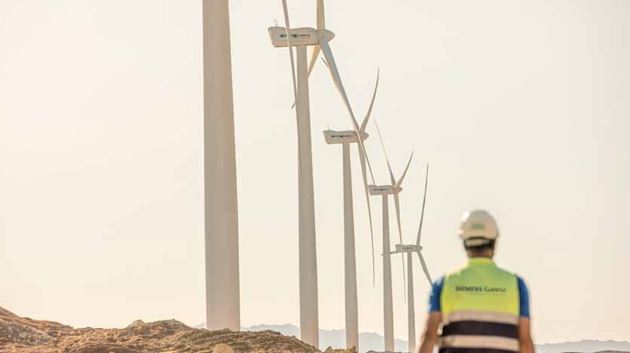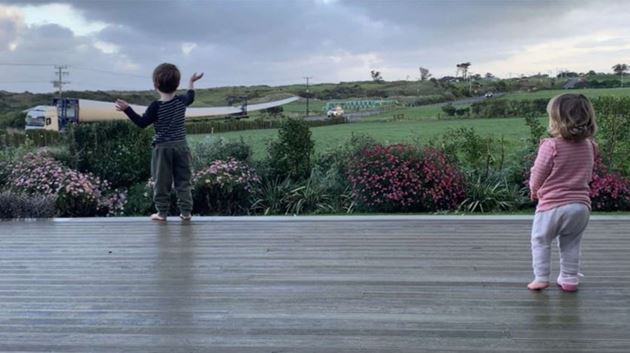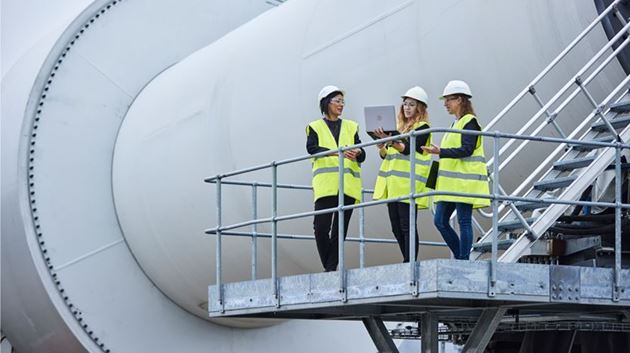
Predicting the future to save energy
Madrid / 19 November 2020
It sounds like science fiction, but it’s not. Our team can predict the behaviour of wind turbines and prevent failures before they occur. How do they manage to do it? Thanks to mathematical models that over the last nine years have been able to detect 50,000 anomalies in wind turbines. And the result? Well, pretty incredible, with savings of over a million hours of energy.
Imagine that wind turbines were people, equipped with sensors that send information every ten minutes on multiple variables such as temperature, blood pressure, etc. And that doctors could analyse those symptoms and compare them with previous pathologies in thousands of other patients. Could heart attacks be prevented and even lives saved? The answer is yes. This is exactly what Siemens Gamesa is achieving in wind turbines through diagnosis based on mathematical models.
How does it work?
The remote model based diagnostic system (MBD) is a collection of more than 500 mathematical models, that know how individual components, systems and processes are supposed to behave inside the wind turbines, in almost any environmental condition.
“Whenever the data streaming from any of the 400 sensors installed in each of more than 17,000 wind turbines monitored by the system in 44 different countries – this amounts to almost 1.500 billion measurements each day – no longer fits to the model, this may indicate a problem. If this is the case, a ticket is created, asking the service technicians to investigate and address the issue,” explains Henrik Pedersen, who is in charge of model-based diagnostics at Siemens Gamesa.
“Whenever the data streaming from any of the 400 sensors installed in each of more than 17,000 wind turbines monitored by the system in 44 different countries – this amounts to almost 1.500 billion measurements each day – no longer fits to the model, this may indicate a problem. If this is the case, a ticket is created, asking the service technicians to investigate and address the issue,” explains Henrik Pedersen, who is in charge of model-based diagnostics at Siemens Gamesa.
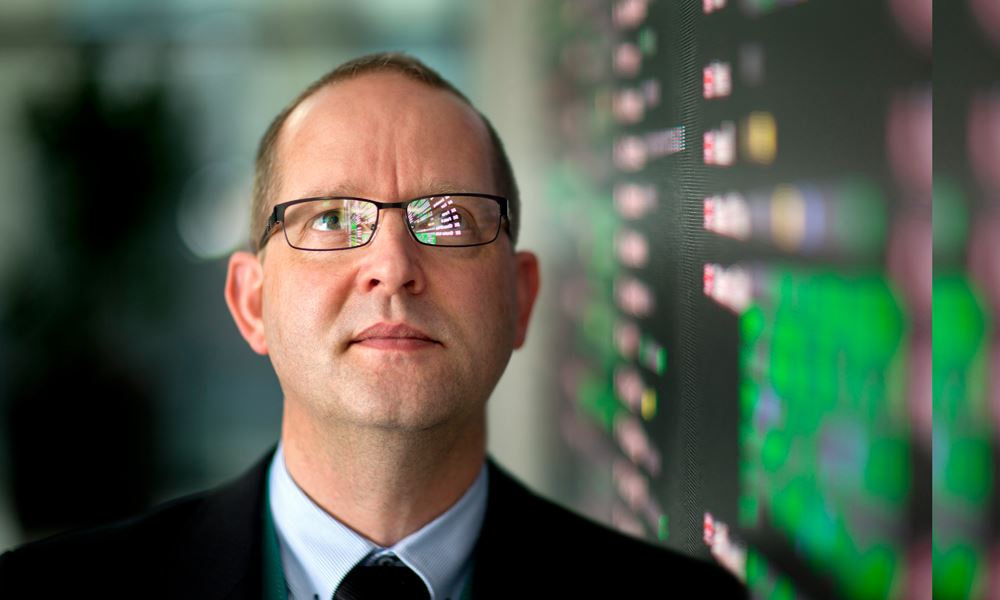
One million hours of energy saved - early detection represents an opportunity
Highland wind farm in Iowa (USA) generated the 50,000th ticket last August, a record for a project that was launched ten years ago when very few people were talking about big data or machine learning. Since then, Henrik's team has been incorporating some 60 mathematical models every year, increasingly advanced, covering both the latest Siemens Gamesa models launched on the market as well as turbines built in the last decades. And the digital models are even being developed
for technologies by other manufacturers like Vestas, Senvion and GE, of which Siemens Gamesa has a growing fleet under service.
The advantages of this system are immense. Firstly, problems are detected at a very early stage, making repairs easier, faster, safer and cheaper, and avoiding major complications. The time when the machine is stopped and not operating is reduced and stops can be programmed for periods with less wind, which is especially beneficial for offshore projects. By keeping turbines fit in all areas, the company can avoid wear and tear on components like electronics, valves or motors. The maintenance team's work is made easier because when the warning is generated it is already accompanied by a detailed guide with the procedure for action and the spare parts needed for the repair.
As Henrik highlights, each early detected defect represents an opportunity. By predicting the future, the 50,000 tickets generated over the last decade have saved over a million hours of energy that would otherwise have been lost.
The advantages of this system are immense. Firstly, problems are detected at a very early stage, making repairs easier, faster, safer and cheaper, and avoiding major complications. The time when the machine is stopped and not operating is reduced and stops can be programmed for periods with less wind, which is especially beneficial for offshore projects. By keeping turbines fit in all areas, the company can avoid wear and tear on components like electronics, valves or motors. The maintenance team's work is made easier because when the warning is generated it is already accompanied by a detailed guide with the procedure for action and the spare parts needed for the repair.
As Henrik highlights, each early detected defect represents an opportunity. By predicting the future, the 50,000 tickets generated over the last decade have saved over a million hours of energy that would otherwise have been lost.
Whenever the data streaming from any of the 400 sensors installed in each of more than 17,000 wind turbines monitored by the system– this amounts to almost 1.500 billion measurements each day – no longer fits to the model, this may indicate a problem
A concrete example
The circuit board, which is part of the control system, usually degrades over time. It is not easy to predict this when looking at the distribution of the failures that occurs on a specific wind turbine but looking at patterns in the sensor data that Siemens Gamesa receives. This could be temperature measurements, pressure measurements, position measurements or a combination of all of them. It is a very special pattern that the MBD system can detect at a very early stage now and that can be compared to one that previously affected another wind turbine and that eventually stopped.
This cannot be detected by the turbine control system because a long history of data is needed- one or two or three months of data - to detect a problem like that weeks before there is a stop on the turbine. The system notifies the service team on site so that they have the spare part required and can schedule the replacement when they visit this turbine for a different reason.
“As a consequence, this becomes a scheduled service on that turbine, it takes about 10 minutes to replace that, and the turbines are good to go again,” highlights Henrik. “We have become so smart that we can identify issues nobody knew about. And get them
“As a consequence, this becomes a scheduled service on that turbine, it takes about 10 minutes to replace that, and the turbines are good to go again,” highlights Henrik. “We have become so smart that we can identify issues nobody knew about. And get them
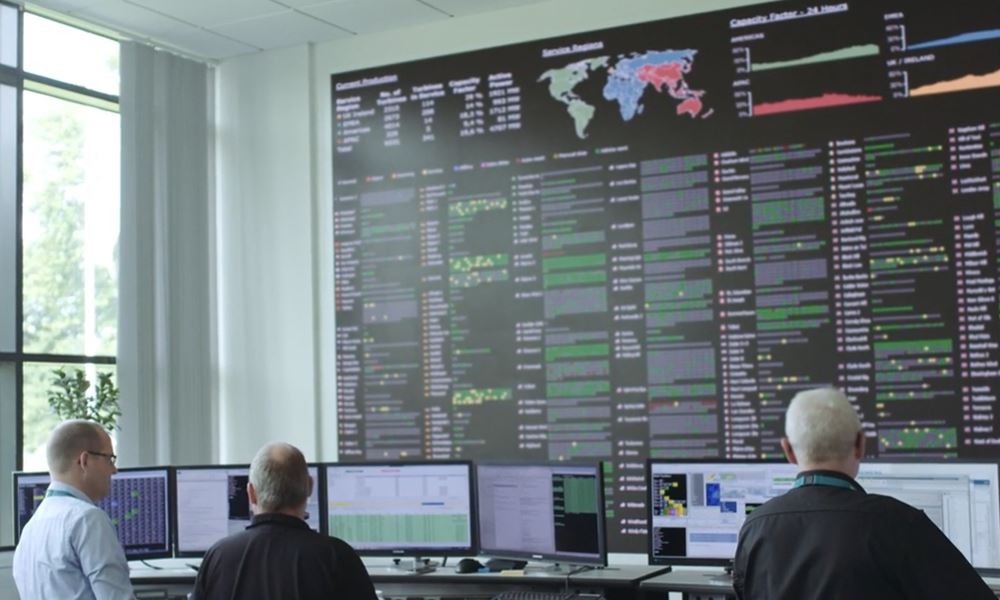
fixed before anybody actually discovers the problem that would have arisen from these issues if they were not dealt with,” he explains.
The next objectives for Henrik’s team have already been set: having more and new sensor types installed in new turbines and use the diagnostic model to perform inspection and tests that today are performed manually by service technicians. "The opportunities provided by digitalization are massive and we at Siemens Gamesa are making the most of their potential to increase value to the customer," concludes Henrik.
The next objectives for Henrik’s team have already been set: having more and new sensor types installed in new turbines and use the diagnostic model to perform inspection and tests that today are performed manually by service technicians. "The opportunities provided by digitalization are massive and we at Siemens Gamesa are making the most of their potential to increase value to the customer," concludes Henrik.

